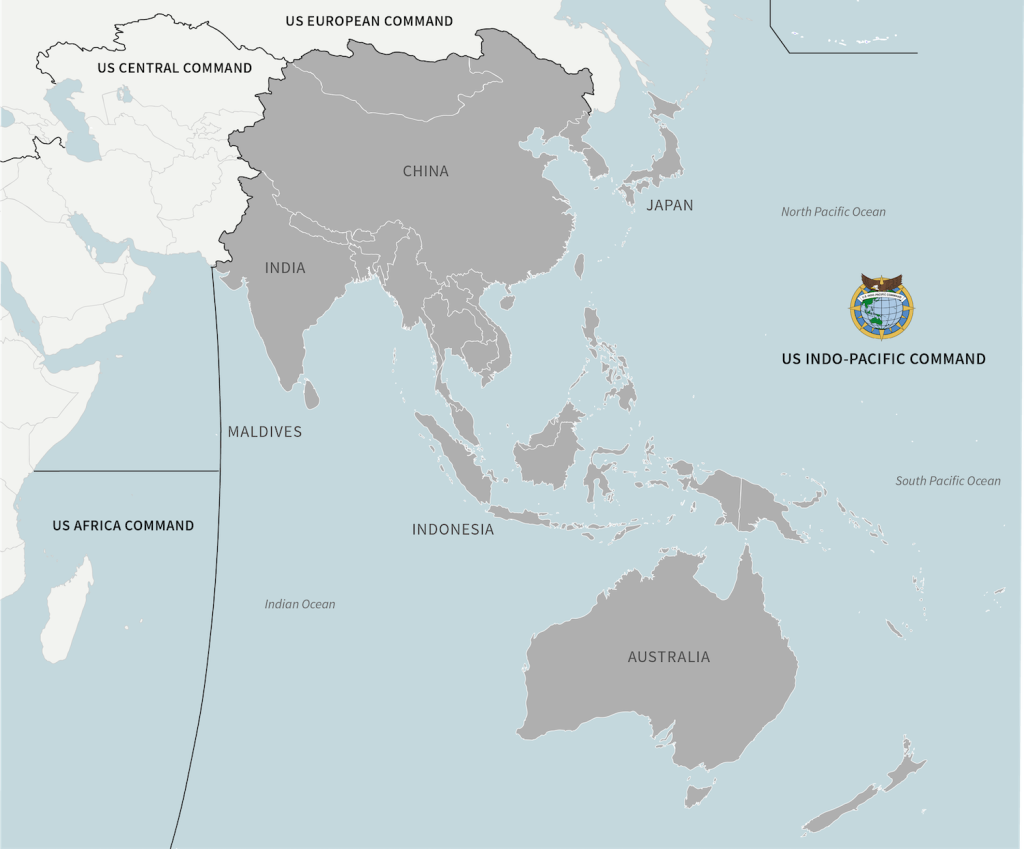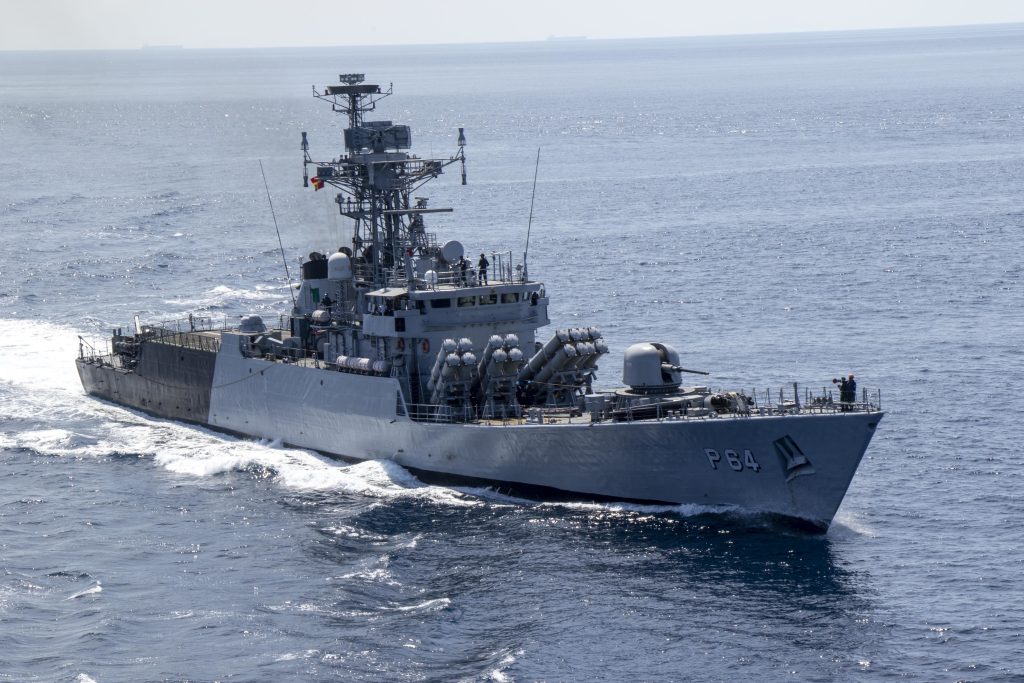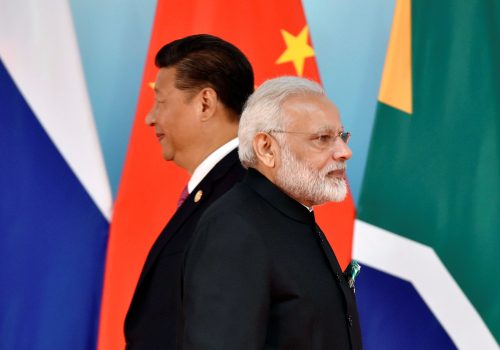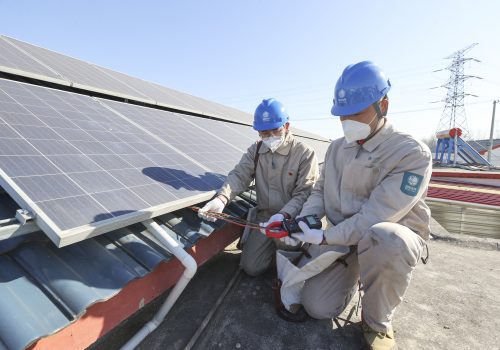During his June 21-24 visit to Washington, DC, Indian Prime Minister Narendra Modi announced with US President Joe Biden the signing of the Master Ship Repair Agreements between their two nations. The deal, now more than seven years in the making, allows for US naval ships in the Indian Ocean region (IOR) to utilize Indian ports as maintenance and repair hubs. The agreement comes at a critical moment as the United States looks to increase its military presence in the IOR—a vast area from the eastern coast of Africa to the western coast of Indonesia and Australia. The United States is doing so in part in response to China’s increased security operations there.
Beijing has long been interested in expanding its operations into the IOR as part of a unified hybrid strategy to protect its growing economic and security interests in the region. Over the last decade, China has acquired new footholds in Pakistan and other South Asian nations, increased maritime exercises, held joint maritime operations with Cambodia, and leveraged regional powers’ growing economic dependence on China to advance its political aims in the Indian Ocean. China is also the only major power to have an embassy in every island nation in the IOR (Sri Lanka, Maldives, Mauritius, Seychelles, Madagascar, and Comoros).
The United States organizes its operations across the Indian Ocean among US Africa Command, US Central Command, and US Indo-Pacific Command, with the last overseeing much of the region. However, this split command of the Indian Ocean leaves diplomacy and security cooperation efforts in the area disjointed. As China continues to grow its influence in US Indo-Pacific Command’s area of responsibility, the United States should deepen its relationships with littoral nations and extend its current Pacific-oriented logistics network into the Indian Ocean to counter Chinese expansion.

US Indo-Pacific Command’s area of responsibility is the largest of any US geographic command, covering roughly half of the Indian Ocean from the western coast of Australia to the Maldives.
China’s play for the Indian Ocean
China’s increasingly assertive behavior, outlined in its “Two Oceans” strategy for the Indian and Pacific oceans, puts the United States’ current logistics network and force posture in the region at an increased risk. Through this strategy, Beijing intends to compete with the United States in both oceans by employing a hybrid military-civilian approach. On the civilian side, China’s Belt and Road Initiative (BRI) provides access to critical infrastructure such as ports through typically nontransparent and corrupt financing and investment agreements. These agreements provide China with economic leverage to coerce favorable political and military arrangements. Militarily, Beijing also hopes to deny the United States its own basing options in the region by increasing the amount of Chinese overseas bases, which would limit US force movement and logistics operations. These bases would also increase the People’s Liberation Army’s ability to gather intelligence, surveil US and allied forces, and improve its long-range strike capabilities.
China’s vision for more power in the Indian Ocean poses not only a security risk to US forces, but also threatens the interests of Indo-Pacific nations coming under increasing pressure from Beijing. In the Pacific, these efforts include the construction of dozens of artificial island bases in the disputed Spratly and Paracel Islands and increased encroachment on Taiwan’s territory. In the Indian Ocean, China has financed port construction projects across the region and beefed up its security relationships with Cambodia, Myanmar, and Pakistan. Beijing’s aspiration here is to steadily form multilateral relationships in the IOR that could eventually produce new naval bases for China and regular joint maritime operations with regional powers.
In response to China’s growing activity in the Indo-Pacific, the United States has adopted a strategy reliant on strengthening its defense alliances in the Pacific, including through the Australia-United Kingdom-United States, or AUKUS, agreement, the Quadrilateral Security Dialogue (QUAD), and increased bilateral military exercises and basing access with the Philippines and Papua New Guinea. However, the United States’ current Pacific-centered strategy has neglected opportunities to complement these efforts through partnerships with Indian Ocean nations. For example, while Indonesia is typically viewed by the United States as a Southeast Asian power, it is a key security partner nation that is a member of several IOR multilateral treaties such as the Indian Ocean Naval Symposium.
Much like India, many Indian Ocean nations have a history of nonalignment, so building defense agreements with these countries, large or small, will not be easy. Today, these countries are more concerned with their internal affairs and are deterred by fears of economic reprisal from China for supporting US forces. The United States should adopt a tailored approach to enhancing IOR defense relationships that will both support the joint force and respect the foreign policies of these nations.
A commonsense strategy for building stronger ties in the Indian
Ocean region
When working with Indian Ocean nations, the United States cannot present itself as a superpower that is only interested in another military base and is detached from the interests of local people. Instead, it should be a committed partner to the region. For example, in June, a mutual understanding on economic concerns helped lead to a breakthrough in US-India relations. However, there is no one-size-fits-all approach for engaging in the region. As a starting point, the United States can expand on its current security assistance to Indian Ocean nations to strengthen ties and build their means for deterring China in the Indo-Pacific.
Several Indian Ocean nations, such as Sri Lanka and Indonesia, already have developed relationships with the United States in counterterrorism, anti-illicit activity operations, and regional military training. In Sri Lanka, assistance has gone so far as to help create a Sri Lankan marine corps and National Defense College. The United States should work toward additional agreements with Indian Ocean nations by building on these existing relationships. Partnership ideas do not have to start from scratch. For instance, the United States could capitalize on ongoing regional talks over maritime infrastructure projects such as the potential India-Indonesia port construction partnership. Such an agreement could provide logistics support to US forces through naval ship repair and maintenance at civilian ports, like the one with India, and an overflight agreement that aids the movement of US and allied forces.
To counter government or public hesitancy or distrust in the Indian Ocean region, the United States should increase its commitment to nonmilitary aid such as humanitarian aid and disaster relief, in addition to infrastructure investment and advanced technical training. Investing in regional blocs such as the QUAD—where aid and infrastructure are already a priority—could help improve support for closer ties with the United States.
In addition, the United States should support regional leadership in multilateral organizations or agreements through countries like Indonesia. The United States should support Indonesia’s renewed push to strengthen Association of Southeast Asian Nations (ASEAN) security, including its leading role in ASEAN’s first joint exercise. Indonesia has already proven to be an exceptional leader in Indo-Pacific maritime security, as it conducts joint naval patrols with India. Historically, the United States has been a strong partner with ASEAN and is currently ASEAN’s largest contributor of foreign direct investment. It is only recently that China has attempted to gain a stronger foothold in the organization to undercut perceived US influence. Greater US support for the organization would not only block Beijing’s participation and influence but also boost the ASEAN community’s ability to protect its sovereignty, which ultimately helps to minimize the spread of US troops patrolling the Indian and Pacific oceans.
Time is running short to counter China as it moves to secure an expanded maritime presence in the Pacific and Indian oceans. The United States’ newly formed security ties with India should serve as just the beginning of its response in the Indian Ocean. It is imperative that the United States expands its Indian Ocean partnerships and creates an interdependent framework for promoting a freer Indo-Pacific.
Delharty Manson is a program assistant for Forward Defense in the Atlantic Council’s Scowcroft Center for Strategy and Security.
Nicholas Nuñez was a Young Global Professional for Forward Defense in Spring 2023.
Further reading
Tue, Aug 8, 2023
China and India are at odds over BRICS expansion
New Atlanticist By Hung Tran
Beijing and New Delhi have different ideas about how the group should move forward, as India’s disagreement with China’s push to rapidly expand the organization’s membership demonstrates.
Thu, Jul 27, 2023
There’s something odd about where China is building solar power
New Atlanticist By Joseph Webster
Beijing’s solar deployment has been wasteful from an economic and environmental perspective, but the shape of its solar build may be influenced in part by security considerations.
Tue, Jul 25, 2023
As Blinken visits Tonga, the US needs to think beyond China in the Pacific Islands
New Atlanticist By Parker Novak
Geopolitics is important, but Washington’s relations with the strategically located region need to be about more than competition with Beijing.
Image: Indian Navy Kora-class corvette INS Karmuk (P64) approaches amphibious transport dock USS Anchorage (LPD 23) to conduct a cooperative deployment (CODEP), on January 12, 2023. US Navy photo by Mass Communication Specialist 1st Class Tom Tonthat.



